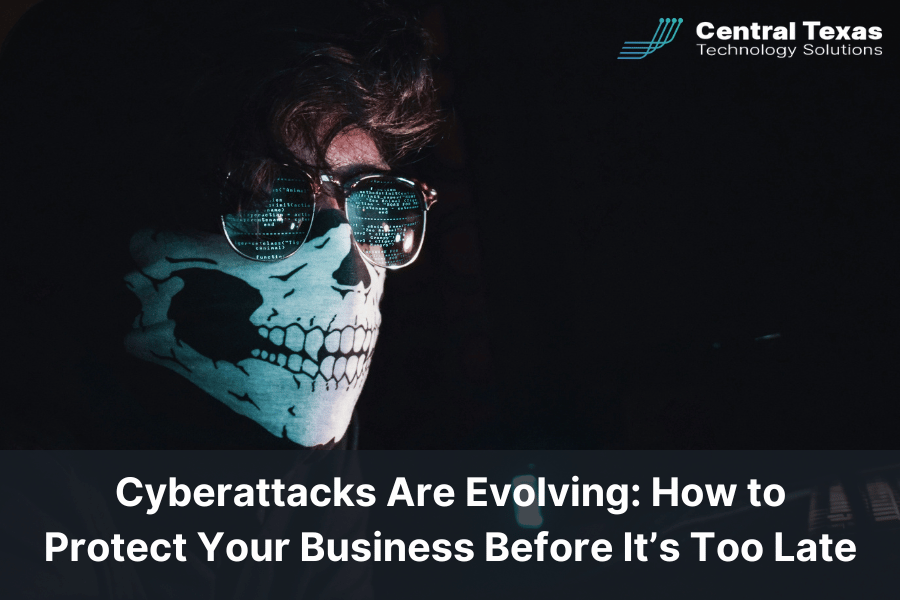
The term “cyberattack” gets thrown around daily, but few business owners pause to ask — what does it really mean? And more importantly, what does it mean for your company?
When most people think of cyberattacks, they imagine hackers stealing passwords or sending phishing emails. While that’s still true, the landscape has changed dramatically. Today’s threats are faster, more complex, and more damaging than ever before.
Understanding the real meaning of “cyberattack” — and the evolving threat it poses — is critical for any business leader who wants to stay protected.
 The Evolution of Cyberattacks: A Historical Perspective
The Evolution of Cyberattacks: A Historical Perspective
Cyberattacks used to be relatively simple. In the 1980s and 1990s, early viruses and basic scams were the main threats. Today, cyberattacks have evolved into organized, large-scale operations targeting businesses of every size. Ransomware, supply chain attacks, insider threats, and advanced persistent threats (APTs) are just a few examples of what businesses now face every day.
Different Types of Cyberattacks and Their Implications
There are many types of cyberattacks, and each one carries unique risks:
-
Phishing and Social Engineering: Tricking employees into revealing sensitive information.
-
Ransomware: Locking your systems until a ransom is paid.
-
DDoS (Distributed Denial of Service): Overwhelming your servers to shut down your business operations.
-
Malware: Infecting your network to steal or destroy data.
-
Insider Threats: Employees or contractors who intentionally or accidentally cause breaches.
Every attack can disrupt your business, harm your reputation, and cost you real dollars.
How Do Cyberattacks Work?
Cyberattacks work by exploiting vulnerabilities — whether that’s outdated software, weak passwords, lack of employee training, or missing security protocols. Attackers often combine tactics, such as phishing to gain access and then installing ransomware to lock down operations.
The Impact of a Cyberattack on Businesses and Individuals
A cyberattack isn’t just a technology problem — it’s a business disaster. The impacts can include:
-
Immediate loss of revenue and productivity
-
Reputational damage that drives customers away
-
Legal and regulatory penalties
-
Significant costs for recovery, legal defense, and system restoration
For individuals, the consequences include identity theft, financial loss, and emotional stress.
Preventing a Cyberattack: Essential Security Measures to Implement
You can’t prevent every threat, but you can make your business a hard target. Here’s where to start:
-
Layered Security: Use firewalls, endpoint protection, email filtering, and intrusion detection.
-
Employee Training: Most breaches start with human error. Training your team is non-negotiable.
-
Patch Management: Regular updates and security patches close known vulnerabilities.
-
Backup and Recovery: Maintain secure, off-site backups so you can recover quickly.
-
Incident Response Plan: Know exactly what to do when something goes wrong.
If you are based in Austin, TX, working with a trusted Austin Managed IT Services provider like CTTS gives you a proactive partner in building and maintaining a strong cybersecurity strategy.
Responding to a Cyberattack: Steps for Damage Control and Recovery
If a cyberattack does occur:
-
Contain the Damage: Immediately isolate affected systems.
-
Communicate Clearly: Notify stakeholders, employees, and (if necessary) customers.
-
Investigate and Remediate: Find out what happened and close any gaps.
-
Recover Operations: Use backups and recovery plans to get back online.
-
Review and Improve: Learn from the attack and strengthen your defenses.
An experienced IT security partner can guide you through every step.
Conclusion: What Does Cyberattack Really Mean?
A cyberattack is not just a “tech issue” — it’s a direct threat to your bottom line. Business leaders who recognize the risks, prepare proactively, and invest in strong defenses will be the ones who survive and thrive.
If you’re not confident in your business’s cybersecurity posture, don’t wait until an attack forces you to act.
CTTS provides proactive, comprehensive cybersecurity solutions through our Austin Managed IT Services. We can help you prevent cyberattacks and protect what you’ve built.
👉 Contact CTTS today to schedule your free cybersecurity consultation.
FAQs About Cyberattacks
Q1: What is the biggest risk to businesses from a cyberattack?
A1: The biggest risks include financial loss, reputational damage, legal penalties, and loss of customer trust. Recovery can take months and cost much more than prevention.
Q2: Can small businesses in Austin, TX really be targeted by cyberattacks?
A2: Absolutely. In fact, small and mid-sized businesses are often prime targets because they tend to have fewer defenses compared to large corporations.
Q3: How can Austin Managed IT Services help prevent cyberattacks?
A3: A local Managed IT Services provider like CTTS offers proactive security monitoring, vulnerability management, employee training, backup solutions, and immediate incident response to significantly reduce your cyber risk.
Contact CTTS today for IT support and managed services in Austin, TX. Let us handle your IT so you can focus on growing your business. Visit CTTSonline.com or call us at (512) 388-5559 to get started!
